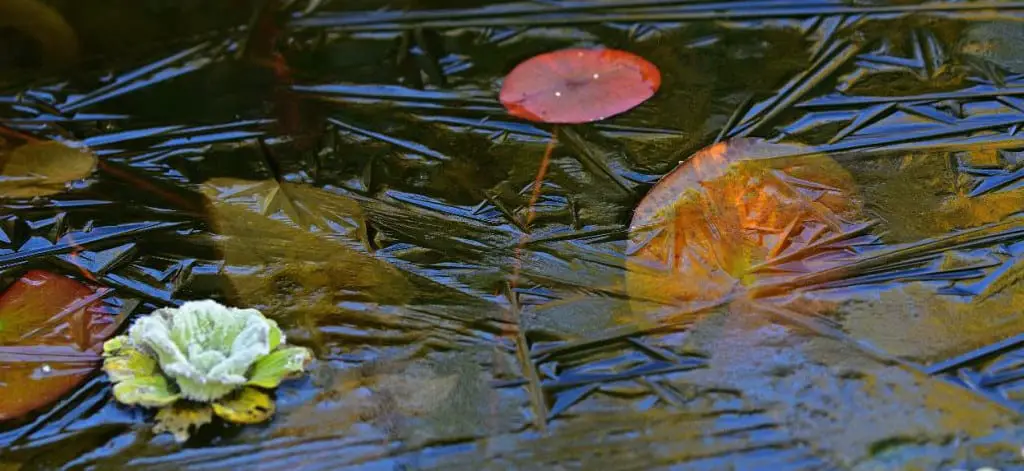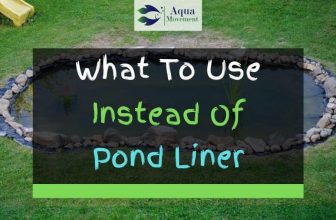Why, How, And When To Use Pond Salt
Backyard ponds can be a true oasis and palace of pleasure for your beloved fish if you keep them properly.
This means control things like the ambient temperature, visible dirt and detritus, but it also means keeping control of levels of certain chemicals in the water, which can be a bit trickier.
Salt levels are one of the most important factors that the responsible pond owner should be aware of.
Almost all popular pond fish are freshwater species. For example, carp, koi and goldfish are all species which can only thrive in a pure freshwater environment. So, you might wonder why on earth would you add salt to a freshwater pond.
Surprisingly, the right amount of salt can actually be very beneficial even for freshwater species. Freshwater fish are not allergic to saltwater, and they might be able to tolerate a bit more than you would think.
In this comprehensive article we will explore the potential benefits of adding salt to your backyard pond. We will also cover strict guidelines for exactly how to use pond salt currently, such as when to use it and what doses.
Many people swear by this practice, and you too might become a firm supporter of this method, once you have read about the benefits.
Table of Contents
3 Reasons To Use Salt In A Backyard Pond
Before delving into the precise details of how to use pond salt, you should understand the fundamentals of why to use pond salt in the first.
It can bring a number of benefits to the general health and well-being of your pond, if you use it in the correct manner.
But if you use it incorrectly, it could actually have a destructive and negative impact on the general pond ecosystem.
1. For Osmoregulation

Firstly, all fish need a certain level of salt in their bodies, just as humans do. You may have heard advertisements for energy drinks boasting high levels of ‘electrolytes’.
Well those electrolytes are really just a fancy scientific term for ‘salts’, and they can serve important bodily functions.
If fish are deprived of too much salt, then just like humans, they can become weakened and fatigued. Fish have a certain concentration of salt in their internal body water.
However, unlike in a human, a fish’s internal body water can pass easily out of its body by passing through the gills, where fluids are routinely exchanged with the outside environment.
Osmotic Pressure
If the concentration of salt in the internal water of a fish is high, and the concentration in the external water is low, then salt will naturally flow out of the fish to try and equalize the concentration.
This is known as the phenomenon of osmotic pressure, and it can result in the fish becoming drained of vital salts.
The average internal salt concentration of most freshwater species is 1% or 10 ppt (parts per thousand). This is significantly higher than the natural salt concentration in most domestic ponds, so you can clearly see that the unfavorable osmotic pressure could lead to issues developing.
Not only does adding salt to the water help to retain the biologically necessary electrolytes in the fish, but it also lowers their energy wastage.
This is because the elimination or loss of salt from the fish body can be an energy intensive process, so if you can stop this process then the fish can have more energy available for other things.
2. As Protection In Winter

Another one of the major advantages of pond salt is that it can help to protect the fish during the cold winter months. The winter months are usually the times when the fish in your pond are at their most vulnerable, and they need your support and protection to fend off illness and injury.
You might be surprised, but a simple addition of salt can help you achieve this. The reason for this is relatively simple.
As stated above, in low-salt water fish will naturally lose some essential salts to the environment through the action of osmotic pressure forcing it into the surrounding environment.
However, when the water is warm and the fish is healthy, they can usually replace all of this lost salt themselves, and so continue to function normally.
Metabolism Of The Fish
But when the ambient temperature drops, the metabolism of the fish slows down considerably. This means that they no longer have the internal energy to fulfil all their natural functions, such as creating salt.
This means the salt levels in their body can drop to dangerously low levels and seriously compromise their immune system. This can leave them wide open to diseases and physical degradation. There are two main ways to combat this.
If you can use a pond heater then you can artificially elevate the temperature and restore their immune system to a healthy condition.
However, if you don’t have access to a pond heater (or you don’t want to pay the expensive electricity bills) then you can always add an extra dose of salt.
This should help maintain their immune-protection and keep them healthy until next spring.
6 Steps On How to Winterize a Pond
3. As Parasite Killer
The third major benefit of pond salt is that it can help kill dangerous parasites in the water. Unfortunately, backyard ponds can play host to a wide variety of different parasites such as Chilodonnella, Costia and Trichodina.
These can cause debilitating diseases in your fish and generally attack the pond ecosystem. Salt can kill many common parasites, through the osmotic action described earlier.
Essentially, salt concentrations between 0.3% and 0.5% will upset the cells of the parasite’s body and cause them to dehydrate.
This will kill off a lot of the more annoying species pretty quickly, leaving your water pure and parasite free. You can use this as a short-term technique to essentially purify the water, and then gradually lower the salt levels afterwards.
There are some caveats to be conscious of when using pond salt. Very high levels of salt can damage aquatic plants, causing them to stop growing and sometimes wither.
Beyond this, you may even damage the health of some fish species if the salt level rises such that the water starts to become brackish.
How To Use Pond Salt
[amazon box=”B00P9E6PKQ”]
If you want to learn how to use pond salt properly, there are a few key steps that you need to follow.
First of all, you need to know exactly how much salt to use. Typically, you should use about 1 gram of salt per liter of water.
Firstly, figure out the volume of your pond. Most owners will know this in advance, but if not, you may need to work it out.
Add the appropriate dose of high-quality pond salt in a cup. As a rough guideline you can add 2 to 2.5 cups per 100 gallons of water.
Mix the water well to homogenize the contents of the pond.
Monitor the salt concentration in the pond by using a test kit or hygrometer.
You may want to spread out this treatment over a few days, to avoid rapidly upsetting the chemical balance of the pond. For example, you could add half of the salt one day, and the remainder in a few days.
Quick changes in salt or other chemical concentrations can cause stress and illness to the resident fish.
Things To Be Careful Of
If you plan to add salt either to keep your fish healthy over the winter or to kill parasites, there are a few things you should be wary of. First of all, don’t add too much salt, especially if you have vegetation in the pond.
Salt concentrations above 0.1% will harm a few species of aquatic vegetation such as water hyacinths and lotus flowers. Above 0.2% even more species will be affected.
Another thing to be conscious of is the type of pond salt you use. You should only use salt specially designed for use in domestic ponds and formulated by a reputable manufacturer. Non-iodized salt, meaning pure sodium chloride, is the best type of salt for this purpose.
Generally, water softening salts will not be effective and should not be used. They often contain anti-caking agents (such as YPS) which can be toxic to many fish species if they are ingested.
A good quality salinity tester is a good investment if you plan on regularly topping up the level of salt in your pond. This is a quick and convenient method of accurately determining the salt concentration.
[amazon box=”B01BXDTSXW”]
Conclusion
In this article we have detailed how to use pond salt in an effective manner. There are major potential benefits to adding this very simple, widely available ingredient to your backyard pond.
Unlike many chemical treatments, it is not inherently dangerous or toxic or harmful for the environment.
You should still take care to follow the dosage guidelines given in this article, but you can experiment a bit to find the right concentration for your pond. This will depend on the fish species and aquatic vegetation present in your pond.
If you are worried about your fish surviving the winter, then a little bit of salt can go a long way.




